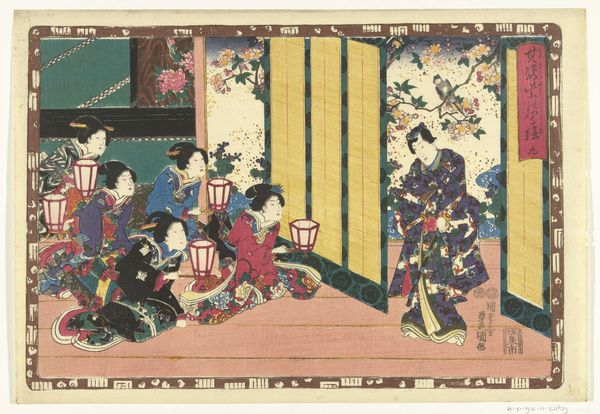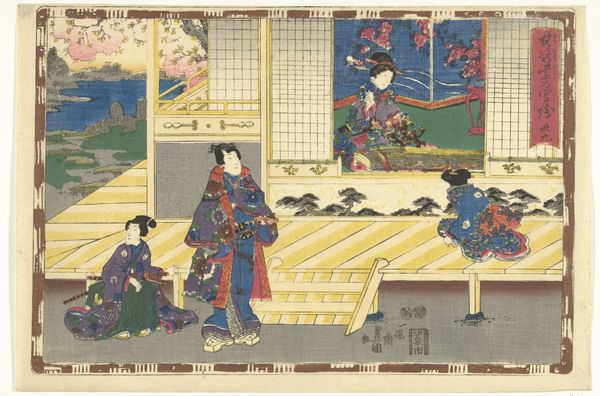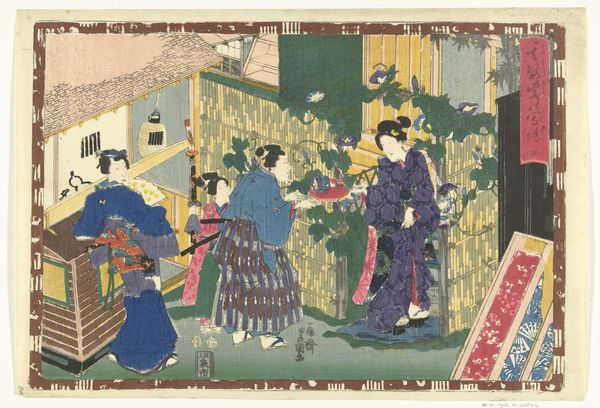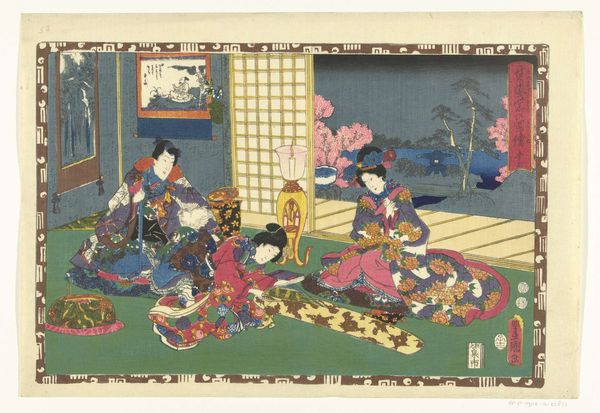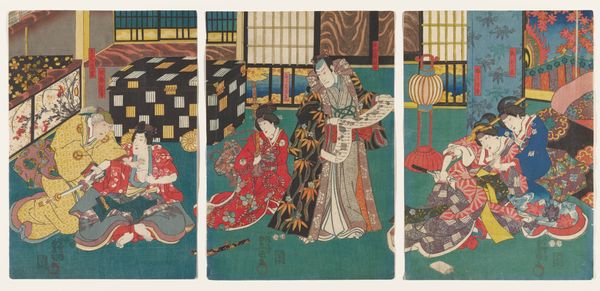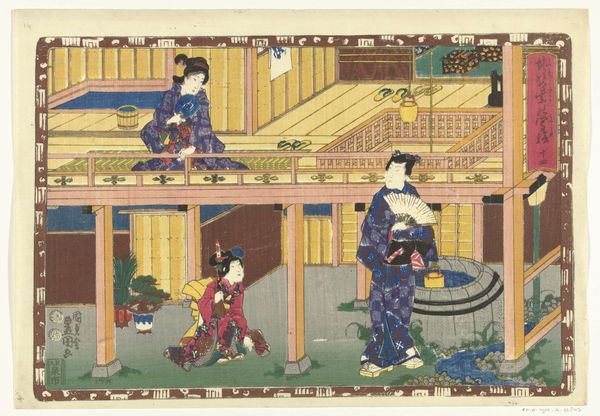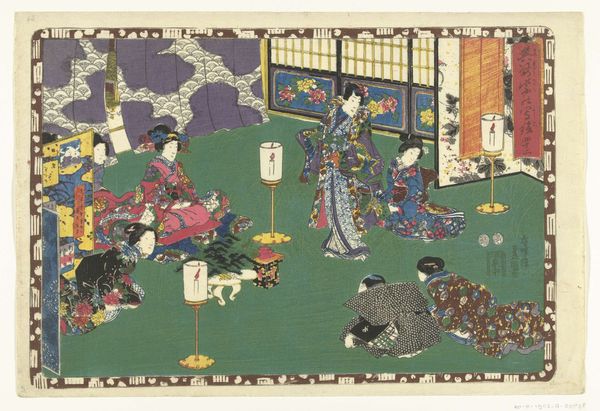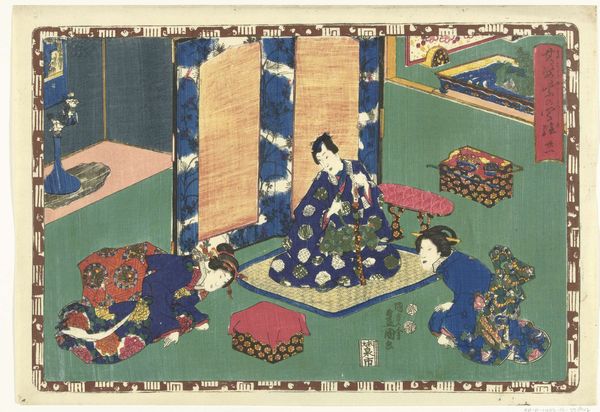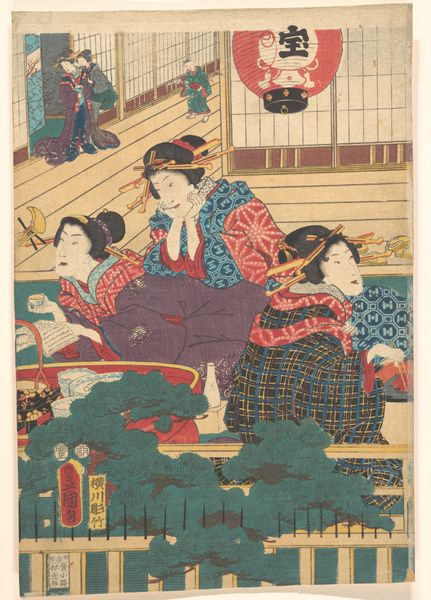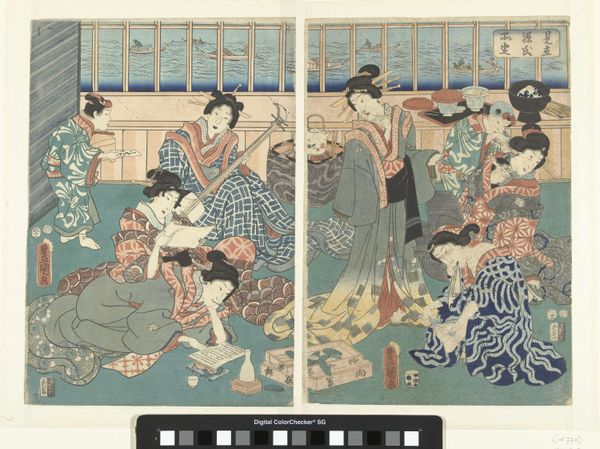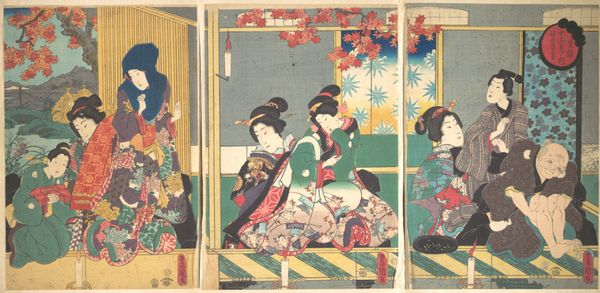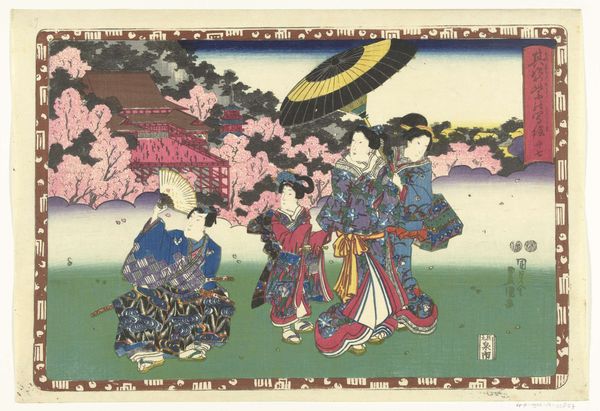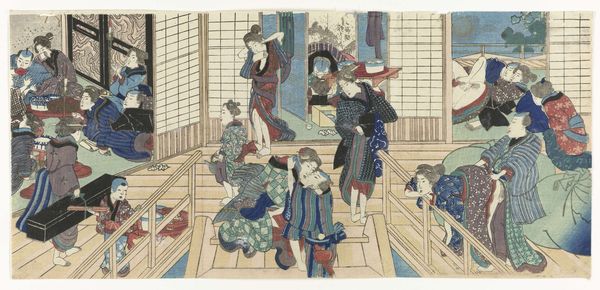
#
unusual home photography
#
pastel soft colours
#
egg art
#
stain glass
#
retro 'vintage design
#
handmade artwork painting
#
art nouveau
#
watercolour illustration
#
cartoon carciture
#
cartoon theme
Dimensions: height 383 mm, width 260 mm
Copyright: Rijks Museum: Open Domain
Curator: Allow me to introduce Utagawa Kunisada's "Chapter 31", created between 1851 and 1853, a striking woodblock print housed right here at the Rijksmuseum. Editor: My first impression is of vibrant colors. There's such richness to the blues and pinks in this scene, set against a rather stark green floor. It's a theatrical stage of domestic life. Curator: Indeed. The stage metaphor is fitting when considering Kunisada’s history designing kabuki theater posters. These women and their surroundings aren't just representations of leisure; they reflect a very specific performative identity cultivated within elite social circles. Note the elaborate kimono designs, the meticulous hairstyles. How does their posture tell us of their social rank? Editor: Well, that elaborate costuming must have required significant artisanal skill. It raises questions about the economics of production. The carving of woodblocks and printing were collaborative efforts. Considering those skilled hands and how it enabled mass reproduction speaks volumes of a system driven by craft, labor, and commerce. Curator: Exactly! And within this domestic sphere, you have layers of patriarchal norms. What are the societal expectations represented for women during this period? Notice the composition—the male figure is standing while women are seated. What impact does this difference in stance project to the viewer? Editor: It emphasizes the gender dynamics you point out, I agree. I am also fascinated by the flat perspective; so unlike European conventions of the period. The surface textures created in the printing process become central to its appeal. Look how much layering created this flatness. Curator: The artist’s exploration into interiority invites us to ask crucial questions. The arrangement, and use of color becomes pivotal in comprehending female roles within 19th-century Japanese society and its rigid power structures. Editor: Examining its production reminds me of the interplay of skilled artisans, each integral to the making and consumption of these pieces that allowed such widespread appeal. The blend of artistic intent and social context makes "Chapter 31" so captivating. Curator: Absolutely. Kunisada encourages us to reflect on issues of gender, social power and cultural identity through its layered complexities. Editor: This work's materiality allows us to look at art-making from a production and circulation perspective, and therefore its reception and how people might have interacted with it in real time, which feels really important today.
Comments
No comments
Be the first to comment and join the conversation on the ultimate creative platform.
